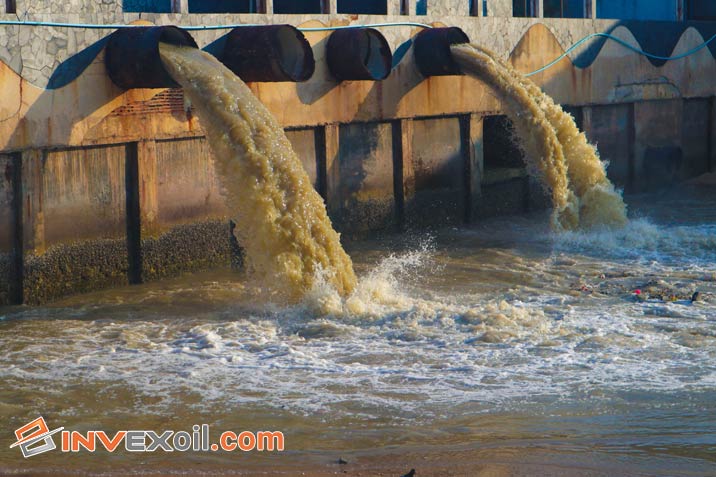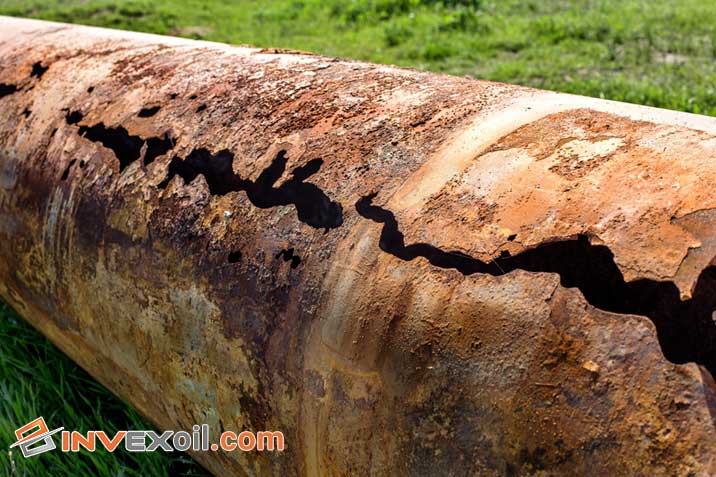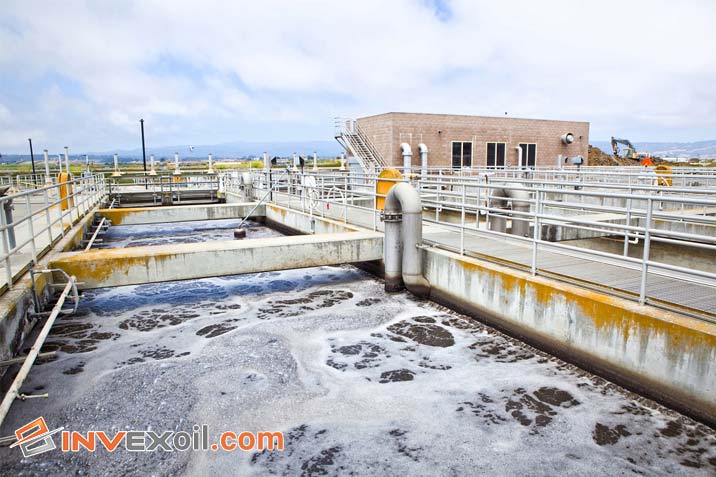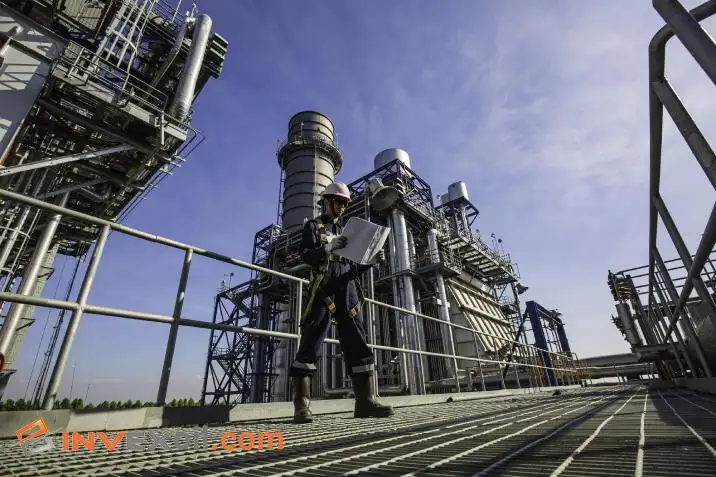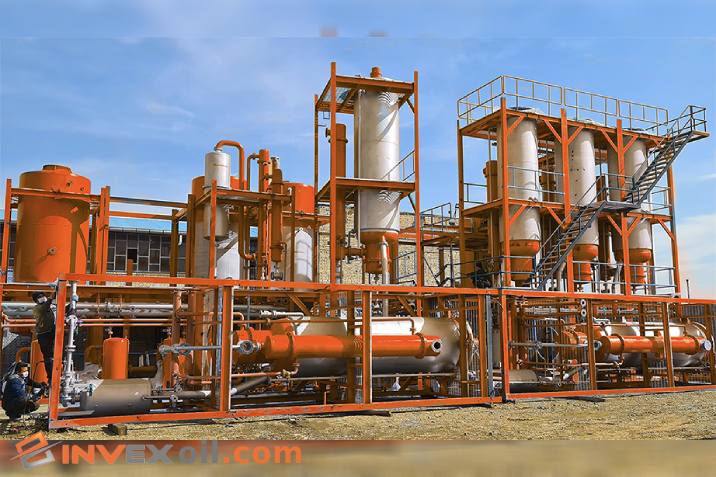Industrial wastewater treatment is a complex process that requires balancing production needs with environmental protection. Businesses are finding ways to do this while staying efficient and protecting our ecosystems. In this article, we will cover the essential parts of it, following InvexOil and its used oil re-refining blog articles to learn more.
Table of Contents
Pollutants of Industrial Wastewater
As you may know, Industrial wastewater is a complex mixture containing various pollutants originating from diverse industrial processes. Let’s check the different types of pollutants:
Chemicals:
- Sources: Manufacturing processes, chemical industries.
- Impact: Chemical pollutants in industrial wastewater stem from diverse production processes, posing challenges for effective treatment.
Heavy Metals:
- Sources: Metal production, industrial discharge.
- Impact: Heavy metals like lead and mercury can harm aquatic ecosystems and human health.
Nutrients:
- Sources: Agricultural runoff, industrial discharges.
- Impact: Excessive nutrients like nitrogen and phosphorus contribute to water quality degradation and harmful algal blooms.
Suspended Solids:
- Sources: Construction sites, erosion, industrial waste.
- Impact: Solid particles in wastewater can lead to sedimentation, affecting aquatic habitats.
Pathogens:
- Sources: Sewage discharges, food processing.
- Impact: Pathogens pose risks to public health and necessitate advanced treatment measures.
Methods of Industrial Wastewater Treatment
Industrial wastewater treatment is critical to protecting the environment and public health. Various approaches are used, each adapted to the specific requirements of various sectors. Let’s go over them all:
Physical Treatment Methods
Physical treatment methods play a crucial role in the initial stages of wastewater treatment. These methods involve the physical removal of pollutants. Here’s an exploration of critical physical treatment methods:
Sedimentation:
-
- Sedimentation involves allowing suspended particles to settle at the bottom. This is a standard method in wastewater treatment plants and is particularly effective in removing larger particles.
Screening:
-
- Screening is when wastewater passes through a fine mesh to remove large objects and debris. It is a preliminary treatment that prevents damage to downstream equipment.
Grit Removal:
-
- Grit removal aims to eliminate sand, gravel, and other heavy materials. This process protects equipment and enhances the efficiency of subsequent treatment stages.
Chemical Treatment Methods
Chemical treatment methods involve the use of various chemicals to facilitate the removal of contaminants. Let’s explore some key chemical processes:
Coagulation:
-
- Coagulation involves adding chemicals that neutralize particles’ electrical charges, allowing them to clump together and settle.
Flocculation:
-
- Flocculation follows coagulation, promoting the formation of larger particles (flocs) for easier removal.
Neutralization:
-
- Neutralization is the process of adjusting the pH of wastewater using chemicals, preventing corrosion, and facilitating subsequent treatment.
Biological Treatment Methods
Biological treatment harnesses the power of microorganisms to break down pollutants. Here are some prominent biological processes:
Activated Sludge:
-
- Activated sludge relies on microbial communities to digest organic matter, producing cleaner water.
Trickling Filters:
-
- Trickling filters use microorganisms attached to a media bed to treat wastewater as it trickles over the bed.
Advanced Treatment Technologies
Advancements in treatment technologies have led to more efficient and stringent processes. Some noteworthy advanced methods include:
Dissolved Air Flotation (DAF):
-
- DAF involves the introduction of microbubbles to float and remove suspended solids.
Filtration:
-
- Filtration methods, including sand and membrane filtration, provide additional treatment for fine particles.
Biological Nutrient Removal:
-
- This advanced method optimizes biological processes to remove nutrients like nitrogen and phosphorus.
Environmental Impact of Industrial Wastewater Treatment
The industrial wastewater treatment process is critical to environmental stewardship because it ensures that effluents from diverse businesses do not negatively damage our surroundings. This section will investigate the environmental implications of industrial wastewater treatment, with an emphasis on aquatic life, ecosystems, and infrastructure.
Industrial activities, particularly in sectors like pulp and paper and iron and steel production, release wastewater with many pollutants. If not adequately treated, these pollutants can wreak havoc on the environment. Let’s check the environmental impact by emphasizing this crucial process’s significance.
Impact on Aquatic Life:
Wastewater Composition:
-
- Different industries discharge various pollutants into water bodies, including heavy metals, organic compounds, and nutrients. These substances can pose a significant threat to aquatic organisms.
Biological Oxygen Demand (BOD):
-
- High BOD levels in wastewater can deplete oxygen in water bodies, leading to hypoxia and adversely affecting fish and other aquatic organisms.
Impact on Ecosystems:
Biodiversity Loss:
-
- Unchecked release of pollutants can lead to declining biodiversity as sensitive species struggle to survive in contaminated environments.
Eutrophication:
-
- Nutrient-rich wastewater can cause eutrophication, promoting algae growth and disrupting the balance of aquatic ecosystems.
Impact on Infrastructure:
Corrosion and Scaling:
-
- If untreated, industrial wastewater can corrode pipes and infrastructure, leading to increased maintenance costs and potential failures.
Groundwater Contamination:
-
- Improperly treated wastewater can infiltrate groundwater, affecting its quality and posing a long-term threat to drinking water supplies.
Examples from the Pulp and Paper Industry:
- The pulp and paper industry generates wastewater with high concentrations of organic matter and chemicals used in papermaking. Inadequate treatment can result in the release of toxic substances, harming aquatic life downstream.
Examples from the Iron and Steel Industry:
- Iron and steel production involves the use of various chemicals and heavy metals. The discharged wastewater can have severe environmental consequences without adequate treatment, impacting aquatic ecosystems and surrounding infrastructure.
Conclusion
The challenge of responsibly managing wastewater looms large in the vast landscape of industrial operations. How can industries strike the right balance between production demands and environmental conservation? This comprehensive guide, an exploration rather than a superficial examination, navigates the intricate methods employed for industrial wastewater treatment.
Each method is scrutinized for its effectiveness in removing pollutants specific to industries such as breweries, dairy, and more, from physical treatments to advanced technologies.
FAQ
What are the critical physical treatment methods in industrial wastewater treatment?
Physical treatment methods include sedimentation, screening, and grit removal. These processes effectively remove impurities, providing a foundational step in wastewater treatment.
How do advanced treatment technologies contribute to higher water quality standards?
Advanced technologies like Dissolved Air Flotation (DAF), filtration, and biological nutrient removal play a pivotal role. They enhance the treatment process, ensuring compliance with stringent water quality standards.
Can you explain the significance of biological treatment methods in wastewater treatment?
Biological treatment, employing processes like activated sludge and trickling filters, harnesses the power of microorganisms to break down pollutants. This eco-friendly approach addresses challenges while offering sustainable solutions.
source: Wikipedia

Hello, This is Matteo Hudson Copywriter from InvexOil. We are here to provide super-important content to help you learn more easily and be involved in the world of Petroleum and Chemistry. We are here to answer your questions, help you to have better services, and also find the best solution for your problems. Don’t be shy and ask your questions in the comment box or call our number. If you want to connect with me directly, you can search for my name on Linkedin.

